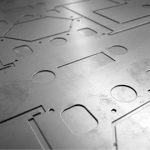The essay is, in general, a literary piece that present the author’s argument, but the exact definition is sometimes vague, overlapping with that of a poem, a letter, an guide, and pamphlet, and even a short story. Essays have often been categorized either as formal or informal. For instance, essays in the very first semester at Harvard College were write my essay discount often called experiments, while undergraduate students wrote their thesis little if any attempt. However, in more recent years, essays have been widely used in college classes, with increasing frequency, and the tendency appears to be ongoing. In the last few years, many universities have changed their definitions of what compose an essay.
A good article requires two components: a topic and an argument. The subject is the overall content of this article, and the debate is either an extension (of this topic) of that content or a elaboration (deduction) of that content. The article’s strength lies in the caliber of its arguments and its ability to convince the reader that the subject is important and well-supported. The argument, however, shouldn’t be one that’s been pre-determined beforehand; it ought to be an argument based on research and observation which may be verified by other experts. As an example, if I were writing an essay about smoking harms children, my argument wouldn’t be”Cite those studies demonstrating that smoking reduces children’ lung function.”
A thesis statement is the most vital part of an essay, although the thesis statement isn’t promo codes for samedayessay necessarily present in all written works. The thesis statement informs the reader about the essence of the literature, the research included, as well as the opinions or judgments concerning the subject. My thesis statement would start this manner:”Based on historic evidence, it’s clear that smoking may lead to a number of different types of cancer.” The thesis statement links the many arguments and facts with supporting evidence concerning those facts and arguments. For instance, my thesis statement may read as follows:”It is apparent that smoking will lead to several different kinds of cancer.”
The conclusion is the part of the article that joins the principal points together. The conclusion generally states there are several perspectives concerning the topic. In this component of the essay, I recommend creating a concise list (not to be plagiarized) of all of the main points you’re arguing for. After that, arrange these points in a summary (not to be plagiarized) on a single sheet of newspaper. Be sure to include the crucial wording and the conclusion.
The debut is the first paragraph of this essay. I invite you to compose a very simple and clear introduction that leaves the most important idea and assumption behind. The introduction starts the article with a list of what the thesis statement is all about and what the most important idea is. Simply speaking, it tells the reader exactly what to expect at the end of the paragraph. I recommend using small paragraphs and bulleted lists to highlight the key ideas. It is ideal to have only one bolded or highlighted point.
The next part of the article is the argument. Here is the meat and potatoes of the essay. I recommend using at least three distinct arguments throughout the article. Make sure you are able to explain every one of those arguments in your own words and why they are important to your debate. If possible, write them out in detail (in the body of the essay) and then rewrite them in chronological order that they make sense.

